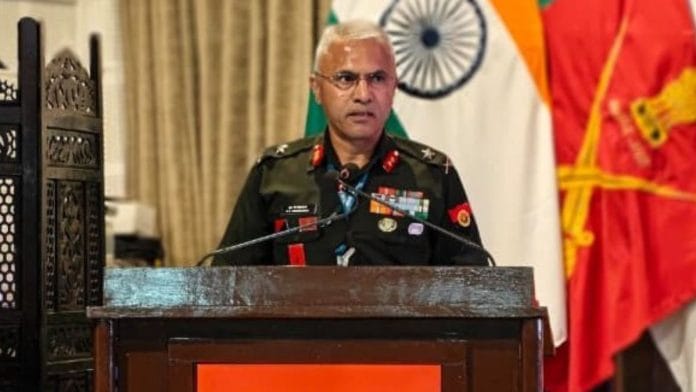Mhow: The Pahalgam terror attack could have been a trap set by Pakistan to induce India into a conflict, believes a serving Major General of the Indian Army.
Addressing the ‘Ran Samvad’, India’s first tri-service military affairs seminar aimed to be on the lines of Shangri La Dialogue here, Major General S.P. Vishwasrao, Additional Director General (recruitment) in the Western sector, also said countries inimical to New Delhi have been trying to replicate what happened in Bangladesh, in India. The yearlong farmers’ protest, the agitation against CAA and the situation in Manipur, he said, was part of a larger ploy to destabilise the country and to prevent it from being ‘Viksit Bharat’ by 2047.
Talking about the Pahalgam attack, the officer, who has also served as India’s Defence Attache in Islamabad, said there was a clear messaging in Hindus being singled out and killed, and survivors being asked to pass on the message to Prime Minister Narendra Modi. The terror attack, he said while addressing a session on Information Warfare, was “aimed at creating political schisms … the aim was to invite or to incite India to react and do a surgical strike for which probably Pakistan may have been ready”.
Asked what he meant by Pakistan laying a trap for India, he said in response to ThePrint’s question that he would not be able to answer since he wasn’t posted in South Block (Army HQ) at the time.
Four days after the Pahalgam attack, ThePrint reported that it is believed in Indian defence and security circles that the massacre was sanctioned by the General Headquarters (GHQ) in Rawalpindi in line with Pakistan Army Chief Gen Asim Munir’s Islamist leanings and attempts to bring back global attention to Kashmir and reassert Pakistan’s stake in the issue.
Munir, who was at the helm of the Inter-Services Intelligence (ISI) at the time of the Pulwama attack, is regarded as a staunch Islamist—unlike his predecessor, General Qamar Javed Bajwa, whose eponymous doctrine advocated a working relationship with India. “Munir is gambling on this. He, in his mind, has calculated India’s response and believes Pakistan can manage it,” a source in the establishment had told ThePrint then.
Meanwhile, Major General S.P. Vishwasrao stressed how protests were organised against the government in India ‘as part of information warfare’. He used slides showcasing anti-CAA protests and the situation in Manipur.
Responding to a question on this, he said, “Do you see what has happened in Bangladesh? So the colour revolution is real. Mobilising people against the government is what a weaponised narrative is all about. It happened in Bangladesh, it’s happening across India. The farmers’ protests are also something like that. Kashmir intifada 2008-2010 and again in 2016 was also there … So we need to be aware that this is happening,” he said.
(Edited by Amrtansh Arora)
Also Read: ‘A sword & a shield’—CDS Gen Chauhan explains what PM Modi’s Sudarshan Chakra is meant to be






